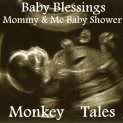Please enjoy this guest post from Emily :)
Early Childhood Education – Acquiring Sign Language
In this diversity society we live in, bilingual ability is something that is not only an advantage to have, but is starting to become a necessity. Along with this trend is the ability to communicate articulately in non-verbal ways for the benefit of the disabled- primarily the deaf.
While learning sign language is a advantage in life in general, if is as particularly an advantage in a tilted economic time. With a growing shortage of qualified interpreters fluent in American Sign Language, career opportunities have been very available in the area. If this current trends continue, it's likely that skilled ASL interpreters will have little problem securing lucrative employment in a society where such a commodity is destined to be in short supply.
Signing Before They Can Speak
A great deal of research has come to the conclusion that ages 2 to 5 is the prime time to educate children in different modes of communication and language. This goes beyond the spoken word (though it is an optimal time for children to learn a second language); many young children have an aptitude for signing as well. This can be taught at home or some child care programs incorporate it into their curriculum.
Many indigenous peoples around the world, including American Indian nations, have used sign language for centuries to communicate with other tribes with whom they do not share a language. Some paleontologists and anthropologists theorize that Neanderthals – who apparently lacked the vocal mechanism to produce many spoken words – depended a great deal upon hand gestures to communicate. So it's really not as odd as you may think!
In fact, recent research suggests that sign language is innate! An article published in the Boulder Daily Camera in 2003 presented strong evidence that babies as young as six months old communicate with their hands:
"...by 6 to 7 months, babies can remember a sign. At eight months, children
can begin to imitate gestures and sign single words. By 24 months, children
can sign compound words and full sentences. They say sign language reduces
frustration in young children by giving them a means to express themselves
before they know how to talk." (Glarion, 2003)
The author also cites study funded by the National Institute of Child Health and Human Development demonstrating that young children who are taught sign language at an early age actually develop better verbal skills as they get older.
The ability to sign has also helped parents in communicating with autistic children; one parent reports that "using sign language allowed her to communicate with her [autistic] son and minimized his frustration...[he now] has an advanced vocabulary and excels in math, spelling and music" (Glarion, 2003).
The Best Time To Start
Signing during early childhood education not only gives them a way to communicate, it can also strengthen the parent-child bond – in addition to giving children a solid foundation for learning a skill that will serve them well in the future. The evidence suggests that the best time to start learning ASL is before a child can even walk – and the implications for facilitating the parent-child relationship are amazing.
Co-written by Emily Patterson and Kathleen Thomas
Emily and Kathleen are Communications Coordinators for the network of Texas child care facilities belonging to the AdvancED® accredited family of Primrose child care schools. Primrose Schools are located in 16 states throughout the U.S. and are dedicated to delivering progressive, early childhood, Balanced Learning® curriculum throughout their preschools.



















No comments:
Post a Comment